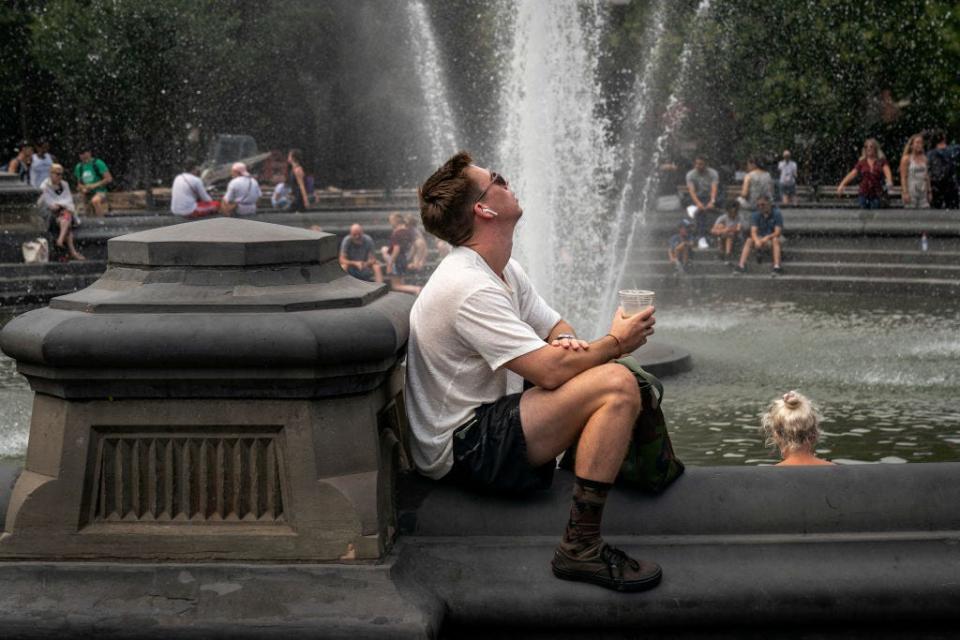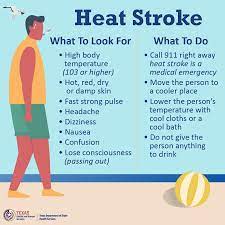Study suggests up to 320 hospitalized for heat in Worcester every year
WORCESTER – Heat, especially extreme heat, kills.
Look no further than last summer’s heat wave in Europe to get a clear read on that point. More than 15,000 people died, and the cause was a direct connection to extreme temperatures that hit 104 degrees and higher, a link made by the World Meteorological Association.
In the United States, it’s estimated that more than 1,300 deaths every year are directly tied to extreme heat, according to an Environmental Protection Agency study that looked at the link between climate change and heat-related deaths.
The EPA noted that the number could be significantly higher because many emergency departments don’t classify deaths as heat-related. Instead, the cause of death can be classified as a heart attack or another fatal condition because that is the medical emergency doctors faced when the patient arrived at the emergency room.
Heat is real and present danger in Worcester
As for Worcester, a recent study showed that heat is a real and present danger to the health of its residents.
The study done by Urban Climate Consulting LLC used statistical analysis to estimate that Worcester experiences approximately eight deaths and 120 to 320 hospital visits yearly for heat-related conditions.
"I'm not surprised by those numbers," said Dr. Matilde Castiel, Worcester's commissioner of health and human services.
Castiel noted the study also identified areas in the city's urban core, including Green Island that runs from the area of Worcester Common south to Crompton Park, as the hottest parts of the city.
The connection between the death and hospital visit numbers and extreme heat in the city's inner core is a problem, Castiel noted. She said the average life span of those living in those socially vulnerable neighborhoods is 11 years less than residents living in the more affluent west side of Worcester.
"If we relieve the burden of health to those neighborhoods and bring resources to those neighborhoods, then we'll do much better as a city overall," said Castiel. Efforts are underway to do just that, Castiel said, including working with the public schools and colleges to establish locations for cooling centers. Currently, Worcester has one at the senior center on Providence Street.
Also, as learned from the past three years of COVID-19, Castiel said it's important for public health staff to go directly into those neighborhoods to find out what people need and how to get it to them.

Disparity in numbers
The state doesn’t publish death numbers related to heat, and the numbers in the Urban Climate Consulting study, in terms of hospital visits, far exceed the state’s published information:
The city experienced roughly 14 heat-related visits to an emergency room in 2017, the latest year figures are available, according to the Massachusetts Department of Public Health’s profile for Worcester.
Statewide, the department’s total number was more than 600 visits in 2017.
According to First Street Foundation, the average adult who grew up in Worcester will see eight times as many hot summer days each year by the time they retire, compared to when they were young.
First Street is a nonprofit that provides peer-reviewed research to assess climate risk. Here is a breakdown of the rising heat prediction due to climate crisis:
A hot day in Worcester is considered to be any day above a “feels like” temperature of 93 degrees.
Worcester is expected to experience seven hot days this year. Due to a changing climate, in three decades, Worcester likely will experience more than twice as many hot days annually - 16 days every year above 93 degrees.
When many adults in Worcester were young, the norm was different. About 30 years ago, the number of days above 93 were just two annually.

Where to focus heat mitigation in Worcester?
Urban Climate Consulting was hired by Worcester to do a heat impact study, and its report recommended where the city should focus its efforts to lower the heat where temperatures are the most severe. They are urban heat islands, like Green Island, that suffer with temperatures at least 10 degrees hotter on some summer days based on recent studies, compared to other parts of the city with more shade trees.
So, if those areas are the hottest, then Brian Stone, a principal at Urban Climate Consulting and a professor of environmental planning at the Georgia Institute of Technology, believes they have the greatest risk of heat-related deaths and hospital visits.
As a result, Stone believes those areas are where Worcester should focus its efforts to bring down the heat.
"We argue as the temperature goes up, (Worcester) is responsible to install and maintain heat-management infrastructure,” Stone said. “Worcester needs to manage its growing heat risk, and if Worcester is going to do it, it needs to know where the risk is greatest.”

Extreme heat called an equity issue
Due to a history of American racial injustice and related housing and social policies, low-income communities of color suffer the most in extreme heat, including in Worcester.
“To me it’s also an equity, social-justice issue and looking at who is most affected by climate change,” said Castiel, who noted many of the country’s urban residents with lower incomes, including those in Worcester, live in areas with substandard air quality and extreme heat.
Castiel suggested the city could potentially explore what other communities are doing, like distributing AC units to residents who can’t afford them and having trucks spray cold water in areas to cool things down.
She also noted more trees need to be planted. Worcester recently applied for $23.5 million in federal funds, with much of the money planned for planting trees in environmental justice communities like Green Island.
What about those who need immediate relief from the heat?

Planting trees is welcome news for the Rev. Clyde Talley, senior pastor at Belmont A.M.E. Zion Church in Worcester's Main South neighborhood. It's a community with a sizeable representation of low-incomes families and people of color.
While Talley sees planting trees as a positive step, he also feels it’s a long-term approach that doesn’t immediately reach those people facing serious health risks from heat. Talley worries about people right now in Worcester who are baking in their homes and don’t have the money to afford air conditioning. He suggested the city should have a program to offer units at a lower price.
“If it’s viable, Worcester should have a plan for folks in this situation to get a discounted rate for AC in their homes, or something not to place them in a position where their health can be affected, or they need go to the hospital. Or not worry about heart attack or stroke,” Talley said. “That’s more of a concern for me."
Talley added: “A long-term solution of planting more trees is fine, but some people may not have that much time to wait for that before something (unhealthy) happens.”
Castiel agrees that a discounted AC program is needed, but believes there's no money in the city budget to pay for it. The answer, said Castiel, is for the community's residents, businesses and nonprofits to provide the money to make it happen.

The data challenge
Solutions require a clear understanding of the scope of heat-related illness in Worcester, and that means there must be reliable data.
That is a challenge because most hospitals, including UMass Memorial Health, the region’s largest health care system, don’t have clear data on the number of patients impacted by heat.
Dr. John Broach has worked in the UMass Memorial Emergency Department for the past 14 years. Based on his experience, Broach said a patient's immediate health conditions upon arrival are entered in the chart, not heat, even when heat-related conditions may have been an underlying cause.

“If someone with a heart attack, related to a higher level of exertion or stress due to heat, we think of it more as cardiac and less as a heat event,” said Broach. “Because what we’re seeing in the moment is what we focus on with the patient. The most acute condition they came for, versus all the factors contributing.”
As for the role all hospitals can play when it comes to data collection connected to heat-related illnesses, Broach thinks current systems can be improved.
“For sure, in all areas, especially around social determinants of health, different medical conditions on the populations we serve, there is a huge amount of room to better understand issues and as a health system in order to better respond to them.”
'Definitely important'
Broach called the Urban Climate Consulting numbers “definitely important”, especially for identifying areas of Worcester where heat is elevated. If problems areas are identified, then solutions can be developed.
“It’s important for the city to understand areas where there is vulnerability. Hopefully, things can be done to try to fix it," he said.
The Telegram & Gazette is investigating the effects of a rapidly heating planet on people who live in our city. Follow along with "City on Fire" as we report the struggle with summer temperatures, even in New England. This is part of the USA TODAY project Perilous Course. Contact reporter Henry Schwan to be included in a story if you have been affected by heat: expense of air conditioning or lack of it, health risks, less access to green space, concern about pets and animals in the summer conditions, worry about an older loved one, etc.
Contact Henry Schwan at henry.schwan@telegram.com. Follow him on Twitter: @henrytelegram.
This article originally appeared on Telegram & Gazette: Heat deaths in Worcester: Fatality risk rises due to climate change

